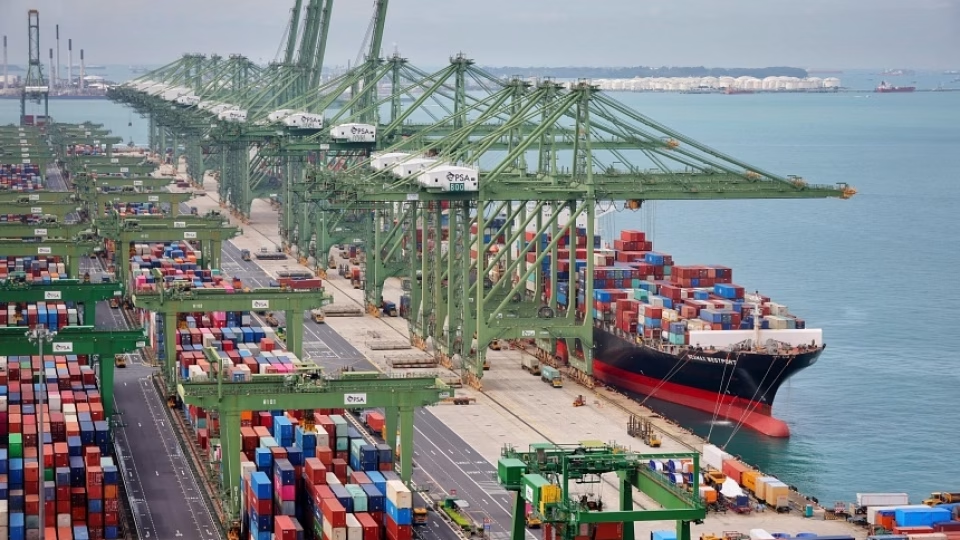September 18, 2024
SINGAPORE – Singapore’s key exports grew for a second straight month in August, with non-oil domestic exports (Nodx) rising 10.7 per cent year on year.
The growth compares with a Bloomberg consensus forecast of a 15 per cent increase, and extends the 15.7 per cent expansion in July.
The gains were mainly driven by electronics even though non-electronics also increased, Enterprise Singapore (EnterpriseSG) noted in its Sept 17 statement.
Year on year, electronics exports surged 35.1 per cent in August, extending the 16.8 per cent expansion in July.
Integrated circuits (ICs), disk media products and personal computers (PCs) contributed the most to the gains in electronics Nodx.
Shipments of ICs, also referred to as chips or semiconductors, jumped 52 per cent, while disk media products grew 166.8 per cent, and personal computers grew by 36 per cent.
ICs, which make up about half of Singapore’s electronics exports, and disk media products both grew faster year on year in August than in July, EnterpriseSG added.
UOB associate economist Jester Koh said the sector is riding on positive tailwinds such as the move to upgrade consumer electronics to incorporate generative AI-related applications as well as the ongoing replacement of equipment.
DBS Bank economist Chua Han Teng noted that global demand for Singapore’s electronics products remains resilient, as seen from the sustained expansion in their latest export orders. He added that Singapore firms are poised to capitalise on the global tech upcycle, which is driven by the replacement of smartphones and PCs, as well as the broadening adoption of artificial intelligence (AI) applications.
Non-electronics exports increased 3.7 per cent in August, slowing from the 15.5 per cent expansion in July.
Specialised machinery, non-monetary gold and food preparations contributed to the growth in non-electronics Nodx. However, the gains were weighed down by pharmaceutical exports, which contracted 31.6 per cent year on year, after two months of positive growth in June and July.
On a month-on-month seasonally adjusted basis, which removes the effects of seasonal variations in the numbers, Singapore’s exports declined by 4.7 per cent in August, reversing the 12.2 per cent expansion in July.
The level of Nodx reached $14.7 billion, down from July’s $15.4 billion but higher than 2023’s average of $14.5 billion.
By markets, shipments to eight of Singapore’s top 10 markets grew in August, led by Hong Kong, China and Malaysia. This contrasts with July when Nodx grew in only six of the top 10 markets.
OCBC Bank chief economist Selena Ling noted that Nodx growth to the US market slowed to 6.4 per cent year on year, reinforcing the narrative that the US economy is slowing.
Exports to Asean markets like Malaysia and Indonesia remained healthy, growing for the fifth consecutive month, while exports to North Asian markets also stayed buoyant, with double-digit growth in shipments to China for the second straight month, Ms Ling added.
On the flip side, Nodx to the European Union (EU) and Japan extended losses, with shipments to Japan down another 29.6 per cent and exports to the EU slipping a further 20.9 per cent.
Ms Ling noted that the external landscape remains complicated by the US presidential election on Nov 5, the sluggish Chinese economy and heightened geopolitical tensions.
DBS’ Mr Chua added that while Singapore’s export outlook has improved, there are still global uncertainties, such as ongoing geopolitical conflicts. These geopolitical tensions, if intensified, could disrupt supply chains and weigh on global trade activity, he said.
EnterpriseSG narrowed its 2024 Nodx forecast to 4 per cent to 5 per cent on Aug 13, saying key downside risks remain for exports, including a weaker-than-expected recovery in the second half of the year.
Singapore’s key exports fell 6.4 per cent in the second quarter of 2024 on the back of volatile pharmaceutical demand, extending the 3.4 per cent decline in the previous quarter.


